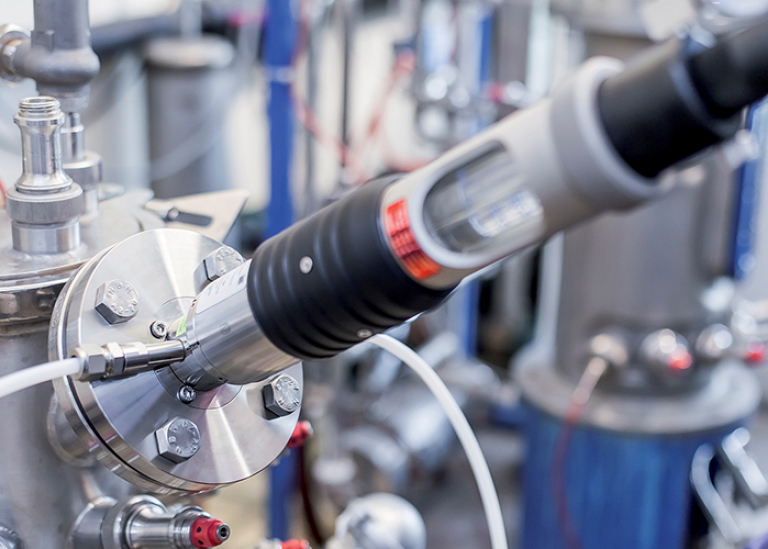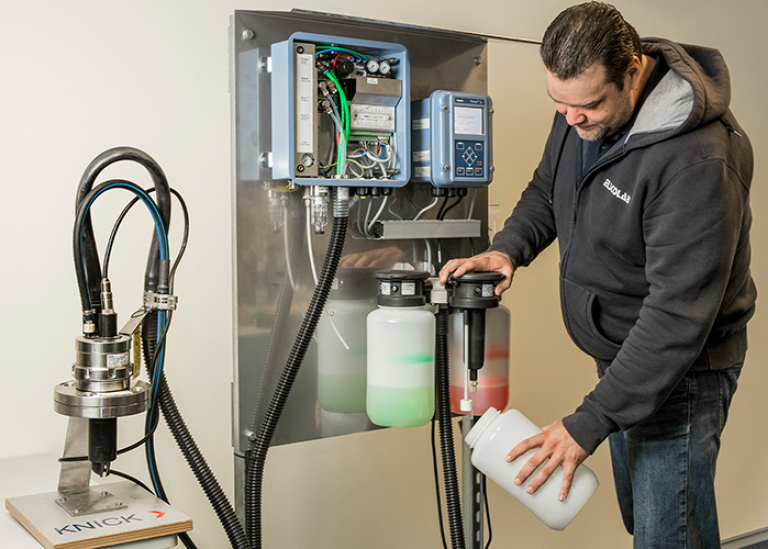
Automatic cleaning and calibration of inline sensors
Inline sensors are, by definition, installed directly in the process flow. Thus they are exposed to actual process conditions such as high or low temperatures and pressures, aggressive products, abrasive environments owing to undissolved particles and polluting substances. Consequence: a lot of maintenance work!
Frequent maintenance
A dirty or corroded sensor does not measure correctly. That much is clear. It is therefore necessary to keep these sensors in good condition. This can only be done through frequent maintenance. That means cleaning, checking, verifying and calibrating very often.
In a production process or (waste) water stream, this is not obvious. After all, you can’t stop the process at the drop of a hat. And, let's face it, the maintenance team has better things to do than clean sensors, right? What if you could easily automate this task?
Regular spraying
Suppose your sensor is in a reactor or open vessel with an immersion fitting. Taking the sensor out of the process for maintenance can then be quite a job. Using a simple but sophisticated system, you can automatically clean the sensor (e.g. a pH or oxygen electrode). You should only choose an immersion fitting with a spray system. You then connect water, compressed air or something else to this. In the menu of your measuring converter (transmitter), which controls a valve, you programme how often the sensor must be cleaned and how long this should take. For example, cleaning for ten seconds every two hours. Of course, the measured values and alarms are frozen during cleaning.
This concept can also be used for sensors in a pipe. For this, you only need a flow-through housing with the same system. Your inline concentration or Brix measurements can thus be periodically cleaned with e.g. water or steam to keep the prism permanently clean.
Practical example: the double stroke
You have an oxygen sensor in an immersion fitting that monitors the oxygen content of your wastewater. The wastewater contains quite a lot of sludge, which may contaminate the sensor and cause it to no longer measure correctly. Furthermore, you want to be sure that the measurement works (functional check).
You can now easily connect a nitrogen line to your immersion fitting. For example, you blow nitrogen on the sensor every hour. Cleaning of the sensor is caused by the gas bubbles and movement. Blowing nitrogen into the water causes the oxygen concentration to drop very locally and for a few seconds. If you follow the measured value of the sensor and you see a 'dip' each time during cleaning, you can be sure that your sensor is still working properly. You have killed two birds with one stone!
The hard work
Sometimes it can be a bit more. If your measurement (pH, oxygen, Brix, refractive index, colour, UV, NIR, etc.) is crucial to your process, you want it to be accurate and reliable. Maintenance, validation and calibration are then of the utmost importance. With a fully automated system, the sensor is located in a pneumatically operated changeover probe (retractable fitting).
Periodically, or on command, the sensor is pulled out of the process and isolated in a rinsing chamber. Here the sensor is rinsed with e.g. water and cleaned with one or more chemicals such as acids or solvents. For pH measurements, you can perform a fully automatic calibration without the intervention of an operator. After cleaning and/or calibration, the sensor is pneumatically reintroduced to the process.
Of course, safety is also taken into consideration. The position of the sensor is permanently monitored. The availability of water, other products and compressed air is also verified. In this way, you really have an autonomous system that you don't need to worry about.
More information?


